La Moskitia, also known as "The Central American Amazon," stands as the binational forest that has suffered the most substantial loss of forest cover in Mesoamerica. According to the “Human Footprint Analysis" conducted by WCS, La Moskitia has witnessed an alarming decrease of approximately 30% in forest cover over the past 15 years, primarily due to illegal land encroachment and extensive cattle ranching.
A study carried out by the Center for Environmental Studies and Biodiversity at the Universidad del Valle de Guatemala highlights conspicuous forest cover losses within La Moskitia, where deforestation has reached up to 113 hectares over the last decade. This transformation is evident in the shift in land use from 2000 to 2020.
In Honduras, this forest primarily encompasses the Río Plátano Biosphere Reserve (the largest and most significant protected area in Honduras, declared as a World Heritage Site and Biosphere Reserve by UNESCO in 1981), the Tawahka Asangni Biosphere Reserve, and the Patuca National Park. In Nicaragua, it includes the Bosawás Biosphere Reserve. This binational forest is a habitat for iconic species such as the Scarlet Macaw (Ara Macao), the jaguar (Panthera onca), and the white-lipped peccary (Tayassu pecari).
La Moskitia is one of the forests included in the 5 Great Forests initiative. The other forests in this initiative are the Selva Maya, shared by Mexico, Belize, and Guatemala; Indio Maíz-Tortuguero, located between Nicaragua and Costa Rica; La Amistad in Costa Rica and Panama; and El Darién in Panama and Colombia. Currently, this initiative receives financing from the Green Climate Fund (GCF) and the European Union and collaborates with partners such as Re:wild and the Mesoamerican Alliance of Peoples and Forests, among other organizations.
To reach the Honduran Moskitia, one must take a flight from Tegucigalpa, the capital of Honduras, to Puerto Lempira, the administrative center of the Gracias a Dios Department. Two major rivers traverse the region: the Patuca River, stretching 500 kilometers, and the Coco-Segovia River, with a length of 1,123 kilometers, considered the longest in Central America and forming the border between Honduras and Nicaragua. Motorized boats or pipantes are the primary mode of transportation for residents traveling between communities. Along the journey from Wampusirpi to Krausirpi on the Patuca River, one can observe cattle on the riverbanks, wandering through already deforested areas.
 Photo: Group of white-lipped peccaries captured with a camera trap in La Moskitia.
Photo: Group of white-lipped peccaries captured with a camera trap in La Moskitia.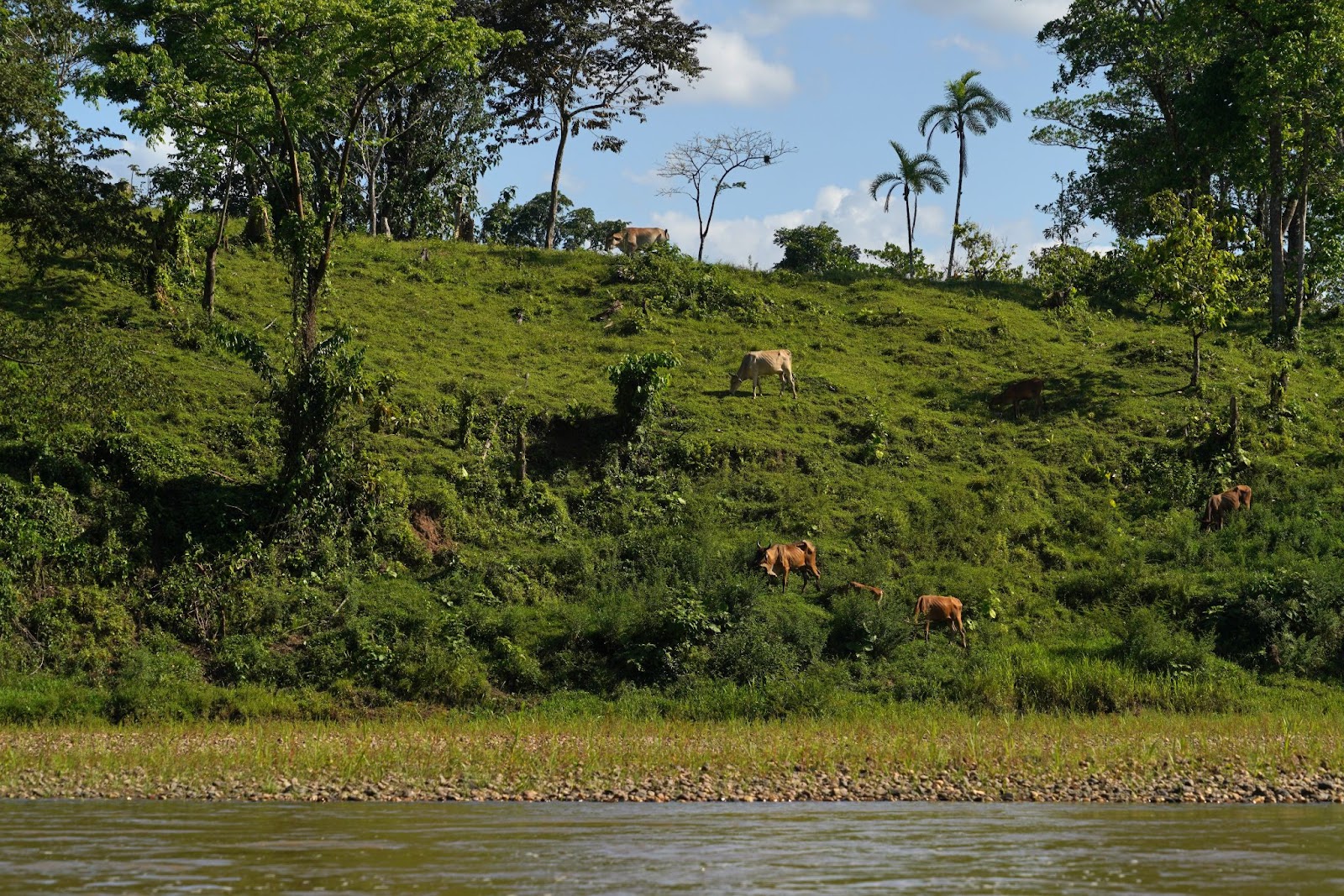 Photo: Illegal cattle ranching is the main cause of deforestation in La Moskitia.
Photo: Illegal cattle ranching is the main cause of deforestation in La Moskitia.
In addition to this issue, there is the construction of illegal roads between Dulce Nombre de Culmí, Wampusirpi, and Krausirpi within the Río Plátano Reserve and the Tawahka Asangni Biosphere Reserve.
A report by InSight Crime on the so-called 'narco-highway' can be consulted here.
Local communities and indigenous populations, including the Miskito, Garifuna, Pech, and Tawakha peoples, are confronted by various other threats, such as encroachment by settlers and land grabbing. During a meeting between park rangers and WCS in La Moskitia, Keny Wilson, a representative of the Bakinasta Territorial Council, explains, "When they come to sell their plots, they often claim more land than they actually need."
According to Alba Rosa Cruz Carrillo, from the Territorial Council of Wampusirpi, the most significant threats are deforestation and the repercussions of climate change. "Today, we observe things that were never seen before. All the animals that used to be seen in this area are now migrating, seeking a suitable habitat to survive," she points out.
As a protective measure to reinforce governance in the Honduran Moskitia, the Interinstitutional Control Post was established in December 2022 in the community of Krausirpe, in the Gracias a Dios Department. It will serve as a monitoring and training center for park rangers and was constructed with support from the Forest Conservation Institute (ICF), Honduran Armed Forces, WCS, and the European Union.
 Photo: Meeting between park rangers from the Wampusirpi Territorial Council and the WCS team.
Photo: Meeting between park rangers from the Wampusirpi Territorial Council and the WCS team.
GUARA ROJA: THE ENDANGERED NATIONAL BIRD OF HONDURAS
From the early hours of the day, the vibrant call of the Scarlet Macaw, known as "guara roja" or "Apu Pauni" in Honduras, fills the air in Mabita, a community nestled in the heart of La Moskitia. The residents of this region are dedicated to safeguarding this magnificent bird, which is designated as the National Bird of Honduras and currently faces the threat of extinction.
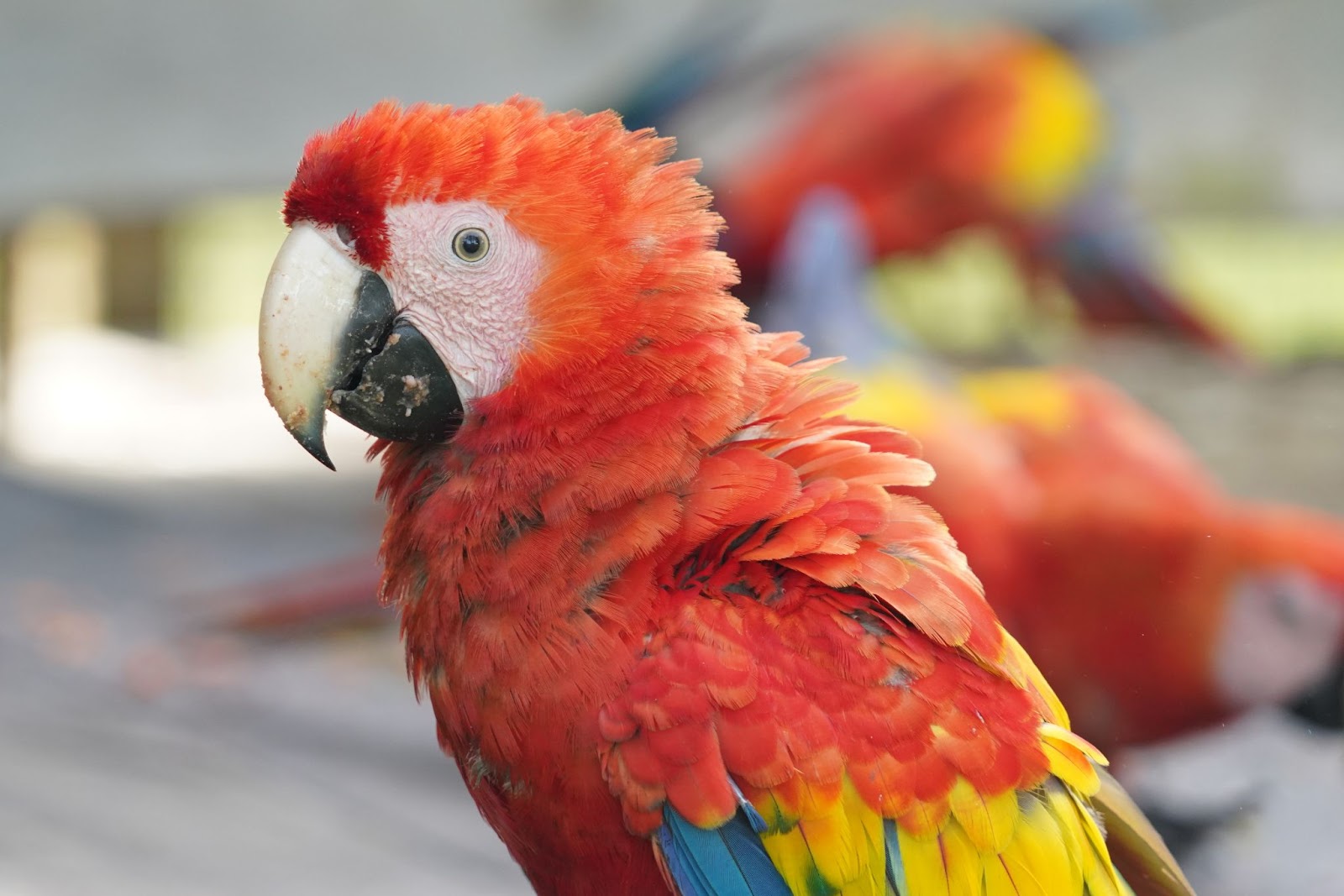 Photo: A scarlet macaw at the Mabita community Release Center, Honduras.
Photo: A scarlet macaw at the Mabita community Release Center, Honduras.
Santiago Lacuth Montoya, one of the community leaders, explains that monitoring the scarlet macaw nests is key to their protection, since the information collected allows them to record the location and number of nests, as well as the presence and health of the chicks, among other data. "If the chick is in critical condition or suffering from malnutrition, we take it to the Release Center, where we ensure its recovery so they can eventually take to the skies, perch, or navigate the perils of the forest," he explains.
The park rangers who monitor these nests in the cavities of pine trees (Pinus caribea), are trained to climb heights that can reach up to 40 meters, which requires technical skill and the use of iron spurs and bands that are fastened around their waist and the diameter of the tree.
The conservation and safeguarding of the scarlet macaw relies on a collective endeavor, as elucidated by Caren Lacoth Miranda, who also hails from Mabita. Alongside her aunts and cousins, Caren is involved in food preparation for these birds, undergoes training for their welfare, engages in patrols, and sets up camera traps for biodiversity monitoring. "It's gratifying to come back to where you were born and put your knowledge to use, especially when it's with family," she reflects.
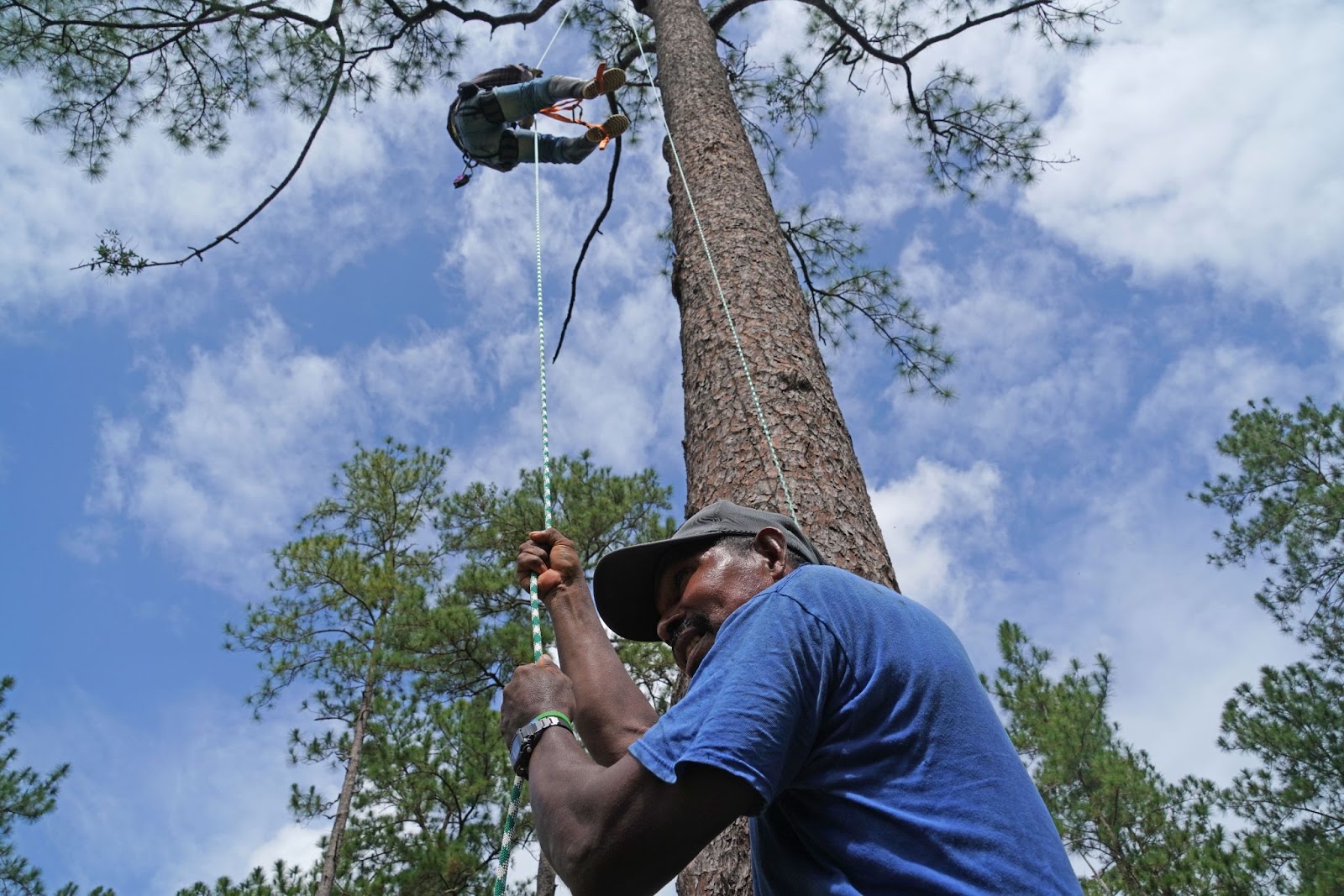
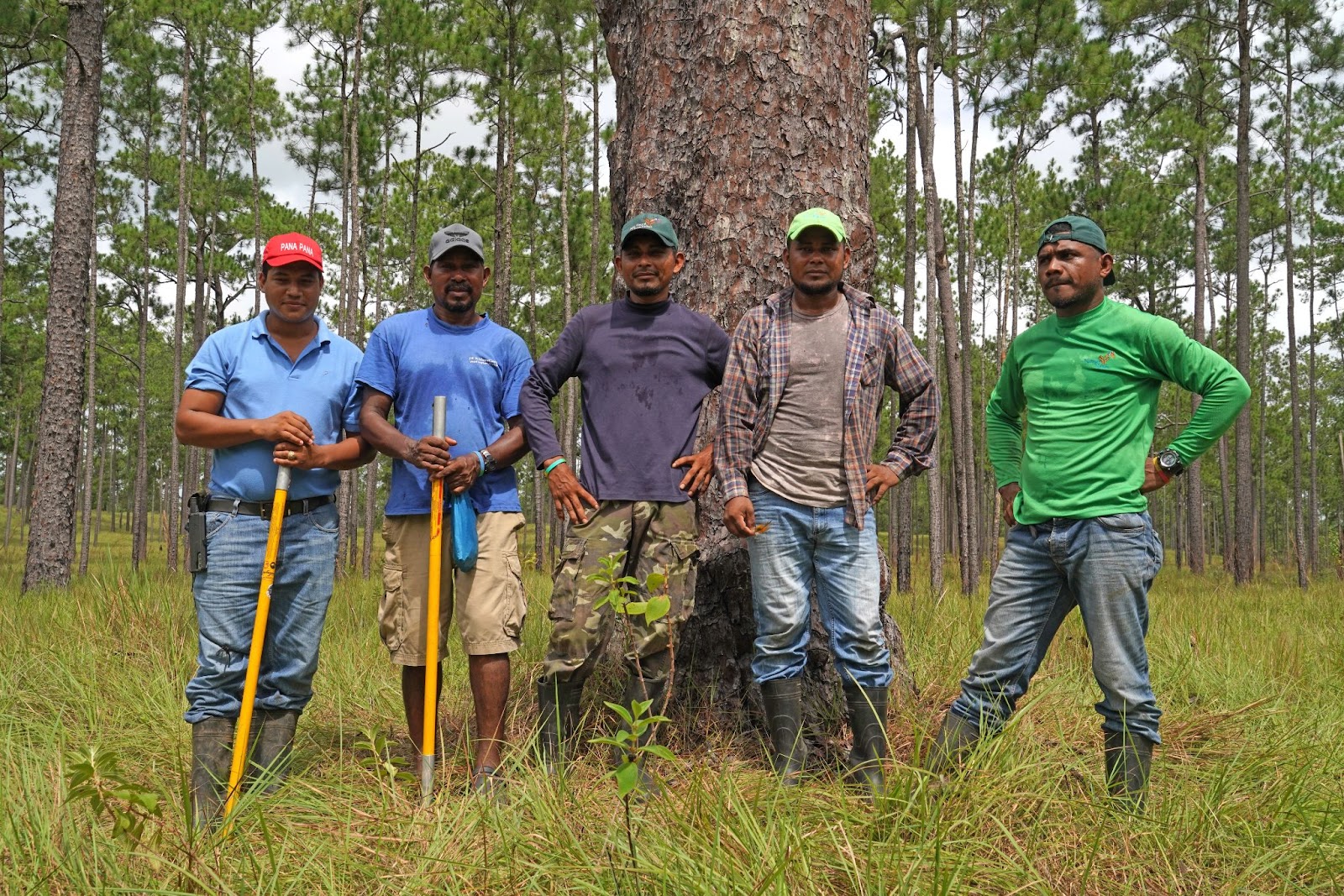 Photos: Santiago Lacuth Montoya and his monitoring team climb pine trees to check the nests with the use of iron spurs.
Photos: Santiago Lacuth Montoya and his monitoring team climb pine trees to check the nests with the use of iron spurs.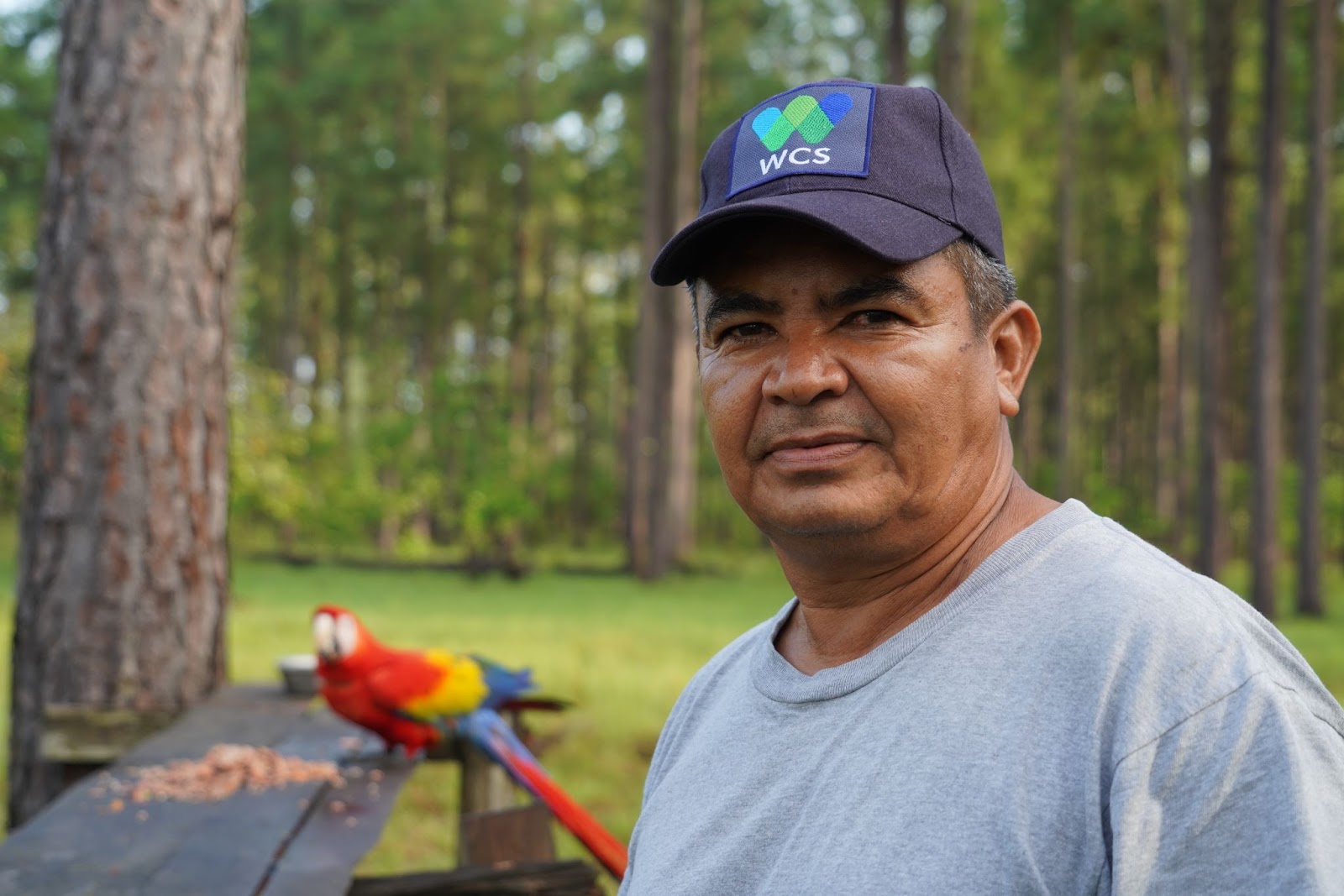
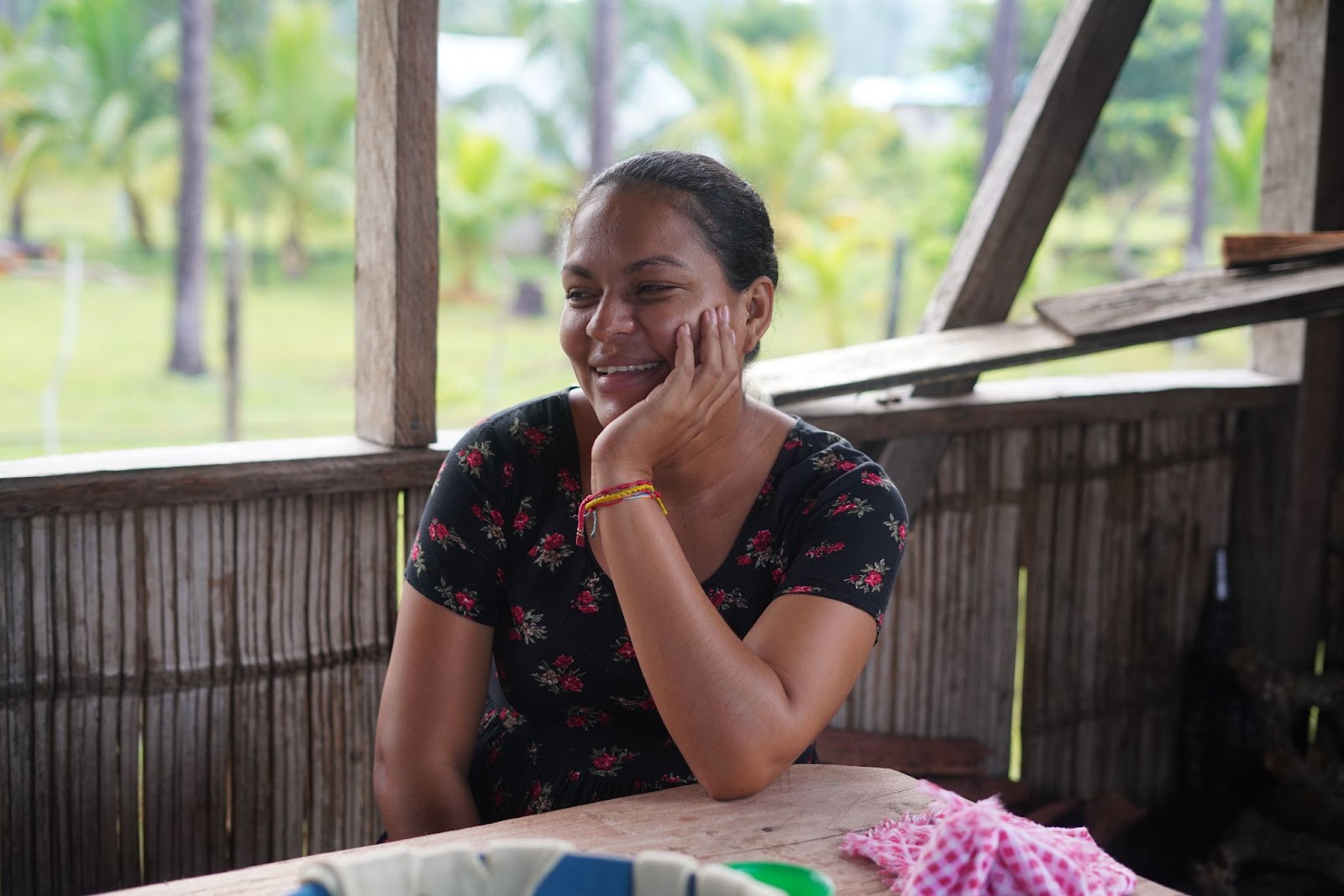 Photos: Luis Paguada, WCS Honduras-Nicaragua technician and Caren Lacoth Miranda.
Photos: Luis Paguada, WCS Honduras-Nicaragua technician and Caren Lacoth Miranda.
SMART: A DIGITAL TOOL TO PROTECT FORESTS
The efforts of the Mabita community are supported by partner organizations such as the Foundation for Research and Conservation of Ecosystems and Biodiversity (INCEBIO), One Earth Conservation, Forest Conservation Institute (ICF) and Wildlife Conservation Society (WCS). They are currently engaged in projects related to cacao production, soil restoration, and the training of park rangers in the use of the SMART tool, a mobile application designed for collecting, measuring, and evaluating patrol and biodiversity data.
Bianca Padilla Arias, a SMART training specialist with the WCS Honduras-Nicaragua Program, notes that as of 2022, more than 70 park rangers from various Indigenous groups in Honduras have received training. These include the Miskito, Pech, and Nahuas Indigenous people, as well as park rangers and technical staff from the National Institute of Forest Conservation and Development of Protected Areas and Wildlife (ICF). They primarily conduct patrols in the Río Plátano Biosphere Reserve. In 2021, the ICF officially integrated the use of SMART as a monitoring and patrol tool in Honduras's protected areas, enabling the identification of threats such as logging, property encroachment, forest fires, wildlife trafficking, and more.
The use of this tool is currently implemented at various scales in the Selva Maya of Guatemala, Belize, and Mexico, the Honduran and Nicaraguan Moskitia, La Amistad in Costa Rica by Guardianes de la Biodiversidad de San Jerónimo, and in the Mamoní Valley in Panama. In the latter, park rangers who are part of the Diammayala Initiative led by local communities and the partner organization Geoversity use the tool. There are plans for its further expansion across the 5 Great Forests of Mesoamerica in the near future.
CACAO AS AN OPPORTUNITY FOR LAND RESTORATION AND RURAL ECONOMY
In the Moskitia of Honduras and Nicaragua, cacao presents an opportunity to safeguard the land, bolster the region's economy, and enhance food security. Marlon Josué Foster, a consultant with WCS in Honduras, asserts that the cacao produced in Moskitia is of high quality. This is because the producers do not use chemicals in their fields and apply specialized care for grafting and disease management, addressing issues like moniliasis and black pod disease.
One of the producers, José Águila Fite, originally from Catalonia, has been residing in Wampusirpi for over two decades. With the assistance of a group of 60 women, they create cacao-derived products, such as milk and sugar chocolates, as well as naturally roasted cacao. He notes that due to the logistical challenges of transportation in Moskitia, they primarily sell their products in Puerto Lempira. He emphasizes that the environmental benefits offered by cacao are closely linked to the crops planted in the vicinity and their proper management.
In the initial phase, which commenced in 2022, a total of 45 family cacao nurseries have been established. The seedlings from these nurseries will be planted over 38 hectares using agroforestry systems, which incorporate plant diversity to optimize yields and enhance production.
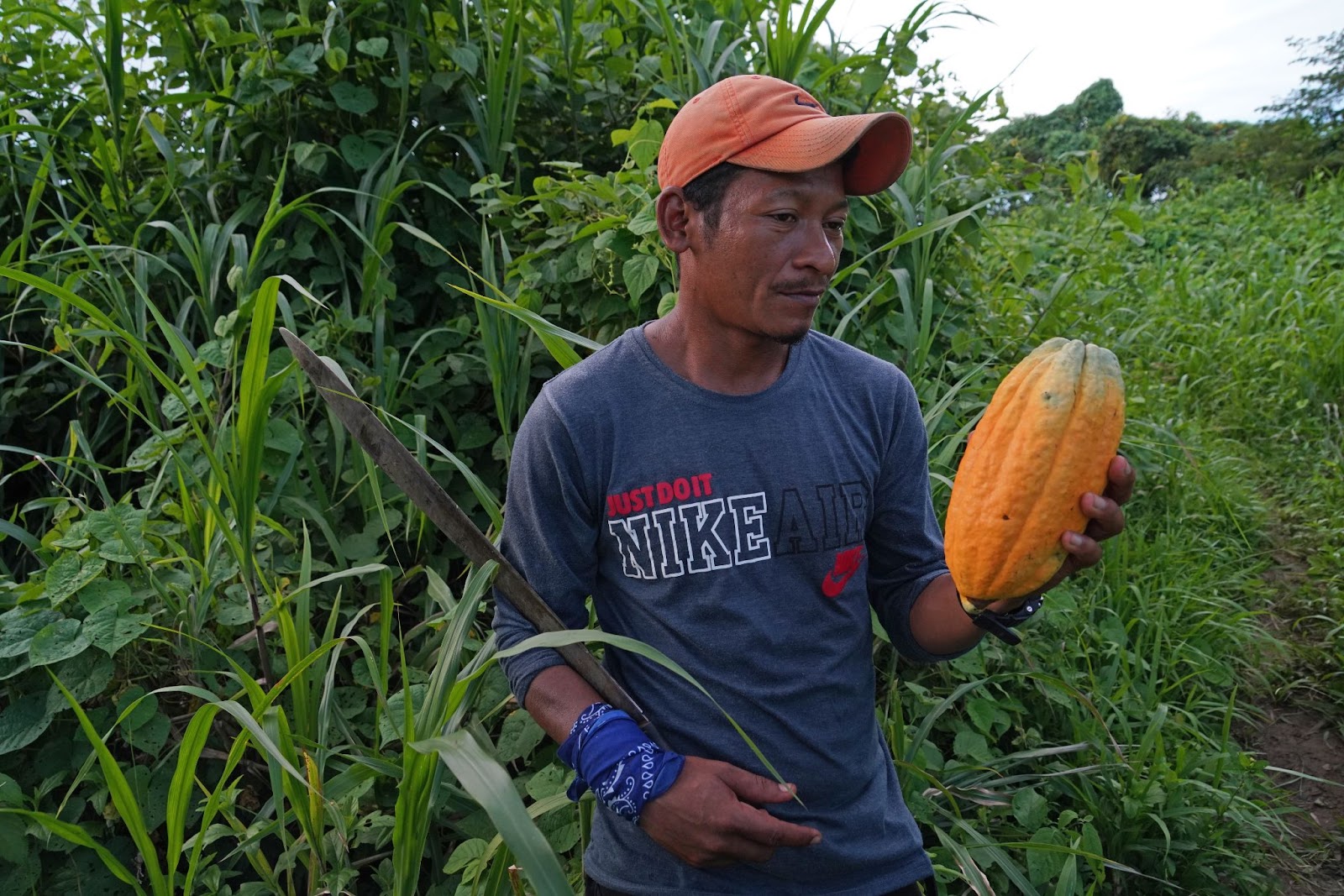
 Photo: Cacao plot installed in the community of Wampusirpi, Honduras.
Photo: Cacao plot installed in the community of Wampusirpi, Honduras.
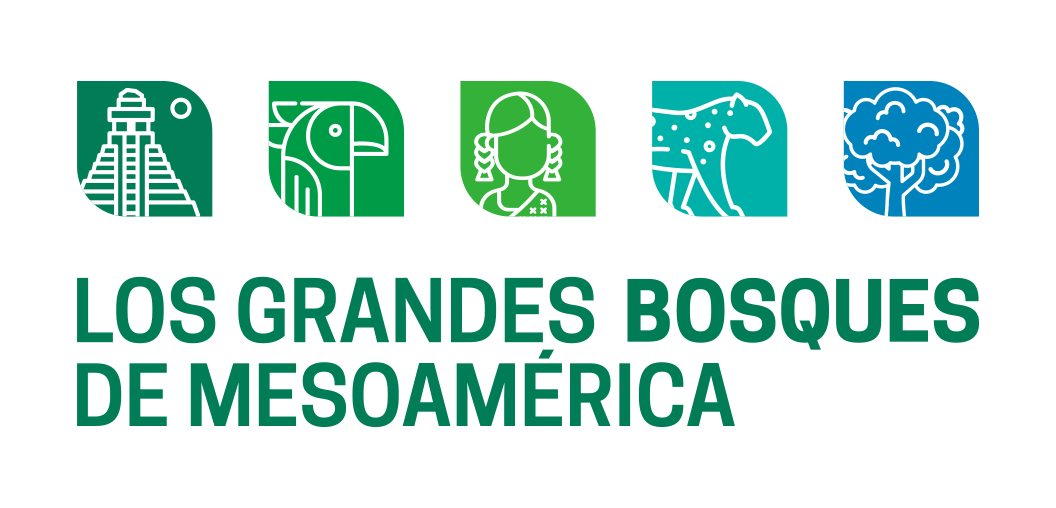
Photos and texts by Claudia Novelo Alpuche. Camera trap photographs by WCS and allies. Maps by Marco Martínez. The opinions expressed in this information product are the responsibility of its author(s), and the GCF cannot be held responsible for any use made of the information contained therein.